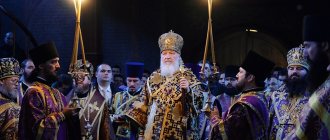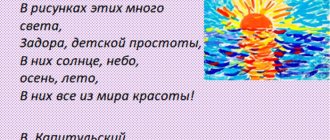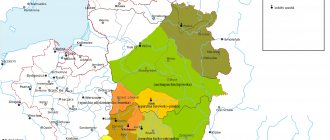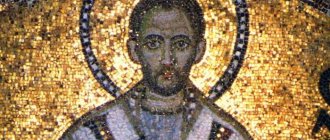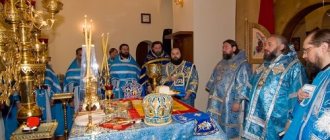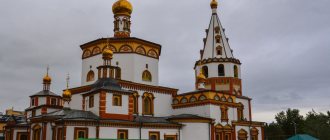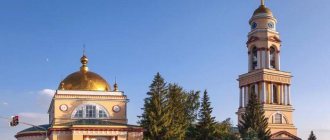Neo-Savat Synthesis – Mount Athos and Slavic Churches
New horizons of development are opening up for the daily liturgical circle and the Book of Hours, which gradually introduces new changes into the services. The studio synthesis reaches Jerusalem and many of its elements, especially those that come from the rite of song, bring, on the one hand, the enrichment of worship and solemnity, and on the other hand, immersion in the theology of the liturgy, and become accepted until then strict, simple and laconic desert Savvaitic tradition.
This latest Neo-Sabbatic version of the daily liturgical cycle will come again to Constantinople, as well as to the monasteries of the Studite tradition, which was caused by the flight of many monks from Palestine after the capture of Jerusalem in 1009 by Caliph Al-Hakim and the destruction of the Temple of the Resurrection, as well as the subsequent further misfortunes of the Eastern Church, caused by the advance and settlement of the Ottomans.
Nikon Mavrorit (1025–1088) was the first to note and record the main differences between two statutes of the same, let us emphasize, Palestinian origin: Savvaite and Studite.
The fall of Constantinople and its passing into the hands of the Latins in 1204 would deal an irreparable blow to all areas of life in the Byzantine Empire. New unfavorable historical conditions in the capital will make it impossible to use the song sequence, while at the same time they will inevitably lead to the withering of monastic life both in the Studite Monastery and in other monasteries in the capital region, as well as in significant monastic centers of Asia Minor.
At the same time, we see the flourishing of Athonite monasticism, which, despite the initial dependence on the exclusively Studite tradition, from the 13th century began to gradually accept the Neo-Sabbatic synthesis. The Lavra hesychast spirit of Palestine will eventually prevail over the urban cenobitic studite monasticism to such an extent that the Neo-Savvaite liturgical tradition will be fully accepted by the Athonite Typicons of the 14th century, and it will completely prevail in them in the 15th century.
Saint Simeon of Thessalonica explains: “Other other services of the statute of the Great Church... are not performed in the Christ-loving royal city due to its capture by the Latins... and due to the lack of many priests and choristers.” On the contrary, the same writer notes, the spread of the Savvaitic Rule throughout the Byzantine Empire is due to the fact that “with it it is possible to perform a service for one person, since it was compiled by monks, and often the service is performed without songs in cenobitic monasteries.”
Finally, with the triumph of hesychasm (1347 and 1351), hegumen of the monastery of the Great Lavra Philotheus Kokkin († 1379), student and biographer of St. Gregory Palamas, twice Patriarch of Constantinople (1353–1355, 1364–1376), codifies the New Savvaite liturgical tradition of Athos in the work “ Diataxis - Rules for the priestly service, or how the deacon and priest serve at Great Vespers, Matins and the Liturgy.” The diatax of Patriarch Philotheus will quickly spread throughout Athos and the dioceses of Constantinople. Southern Italy, the last stronghold of Studite influence, would adopt the Neo-Sabbaitic rite two centuries later, when the pope, by decree of 1587, ordered the monastery of Santissimo Salvatore in Messina to replace its Studite rite with the Savvaitic one.
The “Rule of Priesthood” of St. Philotheus will be translated into Church Slavonic before the end of the 14th century. In Russia, Metropolitan Alexy was the first to introduce the Savvaitic Rule into the Chudovsky Monastery he founded in 1365–1378.
A stage, a cross-section, a milestone in the liturgical life of Russia will be a work about the worship of a true hesychast, Metropolitan Cyprian, a disciple of Saint Philotheos (Kokkin), first on Athos (1364–1373), and then in Constantinople (1373–1375). Metropolitan Cyprian introduced the Savvaitic Rule into the Russian Church in 1378–1401, both in parishes and in monasteries. The widespread dissemination of the Savvaitic Rule, the compilation of the liturgical Psalter, as well as new liturgical books adapted to the Jerusalem rite, brought liturgical uniformity to the Russian Orthodox Church. The essay on the divine service of Metropolitan Cyprian was aimed, on the one hand, at hesychast renewal based on the foundation of the patristic monastic tradition, and on the other hand, at strengthening the unity of the Church of Constantinople with the Slavic Churches.
Monk Afanasy Vysotsky in 1401 compiled the first Russian Savvaitic charter, called “Eye of the Church”, in the monastery of the Mother of God Periveleptus in Constantinople, which sums up and combines various traditions: Savvaitic, Studite and Svyatogorsk.
The Trinity-Sergius Lavra in 1429 will adopt the New Savvaitsky charter, and then in 1441 it will be followed by Novgorod and in 1494 by the distant Solovetsky Monastery.
The Council of the Hundred Heads (1551) approved the liturgical work of Metropolitan Cyprian, while Patriarch Nikon in the middle of the 17th century made an attempt to harmonize the customs of worship of the Russian Orthodox Church with the books of the Greek-speaking Church, thus imposing and strengthening the existence of New Savvaitic statutory elements in Russian liturgical practice.
Printed publications
With the advent of the printing house, the final form of the codified Svyatogorsk New Savvaitsky charter of the daily liturgical circle was published in the first liturgical editions.
The Book of Hours will be published for the first time in 1509 at the printing house of Zacharias Calliergis in Venice, on the initiative and patronage of the publishers themselves. In the second half of the 16th century, this edition would be followed by at least 26 reprints, and until 1600 the number of pages would range from 350 to 560.
The New Sabbat Typikon is accepted everywhere. The first printed edition will be carried out in Venice in 1545. The Diataxis of Patriarch Philotheus will be included in the printed Euchologia of the 16th century, and the printed Menaion will be adapted to it and will include instructions from the Typikon of St. Sava.
At the end of the 18th - beginning of the 19th centuries, the method of applying the Typikon of St. Sava in the parishes of Constantinople, as well as emerging problems in worship, will be described. And here we come to the famous Typikons of the protopsalts of the “Great Church”, which harmonize and apply the Typikon of St. Sava (New Savvaite translation) in the parish liturgical practice of Constantinople in the 19th century:
1. Constantine Byzantium (1838);
2. George Violakis (1888) – known as the Charter of the Great Church.
In the 19th century, the learned cleric from Imbros, Bartholomew of Kutlumush, in his letter dated December 26, 1831 to the Ecumenical Patriarch Constantine I, originally from Sinai (1830–1834), asks for permission and blessing to begin publishing the Book of Hours, thus making an attempt to correct discrepancies in its content.
The Book of Hours, divided into three parts, will be published under the editorship of Bartholomew at the printing house of Francis Andreola in 1832 in Venice. In the same printing house it will be republished in 1634, and in the printing house "Phoinikos" its reprints will be published in 1841, 1845, and so on until the 9th reprint in 1860.
Finally, the Church Committee, which was assembled in 1900 by the Patriarch of Constantinople to publish liturgical books, approved the publication of Bartholomew and relied on this publication when publishing the Constantinople Book of Hours in the same year. This edition was followed, as a rule, by all subsequent editions of the 20th century to the present day.
Daily liturgical circle
Thanks to Georgian liturgical sources, we can now study the liturgical tradition of the daily cycle of Jerusalem worship, which preceded the Sinai manuscript No. 863, of the 8th century. The Georgian Book of Hours in Sinai Manuscript No. 34, written by the priest Iovane in the mid-10th century, includes, among other things, two different Palestinian Books of Hours. The first is called "Savaitic" and in many places is similar to the Sinai manuscript no. 863, while the second "Georgian" seems to have been used in the Church of the Resurrection in Jerusalem, where a monastic community of learned monks coexisted with the clergy and people.
The so-called “Georgian” version of the Book of Hours is a previous form of the Savvaitic one and originates in the song sequence of Jerusalem, where learned monks, after the established prayer meetings (vespers, communion of the Presanctified Gifts, midnight office, compline, matins) continue the sequence of the daily circle, 12 o’clock in the morning and 12 o’clock in the evening, where every hour includes one psalm, kathisma from the Psalter and prayer, so that the entire Psalter is read at least once a day.
Let us emphasize three important points from Georgian sources:
1. The Palestinian Book of Hours begins at the first hour of the day.
2. “the sixth hour of the night” essentially consists of the famous Six Psalms of Matins, which confirms that Matins began with Psalm 50, while everything that precedes it comes from the ancient night sequence.
3. Already in the 10th century, the sequence of the daily cycle ends with eight daily liturgical meetings (Matins, first, third, sixth, ninth hour, Vespers, Compline, Midnight Office).
Since the end of the 4th century, a group of 24 psalms has been found in the monastery of Lower Egypt - 12 daytime and 12 nighttime. This can be read in the answers of the holy fathers Barsanuphius and John (VI century).
Question 74 “About evening and night (prayers); What should a person living alone do? Answer: The hours and church songs are tradition, they are good for the sake of the consent of all the people; and in the community for the sake of the consent of the multitude. The inhabitants of the monasteries do not have watches, do not sing songs, but are engaged alone in needlework, and study, and a little prayer... Around the time of Vespers, the inhabitants of the monasteries read 12 psalms, for each, instead of a doxology, saying “Alleluia” and performing one prayer. In the same way, at night they read 12 psalms, and after the psalms they sit down to do needlework.”
Now we know two editions of the Book of Hours for the daily liturgical circle, as they came to us in about 1100 manuscripts under the title “Divine Psalms with Troparions and Prayers of the Day and Night” for personal use.
Studio synthesis of the Constantinople cathedral song rite with the Palestinian monastic order
Saint Theodore the Studite in 799 moved from the Sakkudia monastery in Asia Minor (Mount Olympus) to the Studium monastery in Constantinople. Of decisive importance were the previous contacts on Mount Olympus of St. Theodore with monks of Palestinian origin, as well as the presence in the Studian monastery at the beginning of the 9th century of the Savvaitic fathers, who came in response to his call to strengthen the persecuted Orthodox in the struggle for the veneration of holy icons.
Along with them, the monks from the monastery of St. Sava also bring the Book of Hours of their monastery, the basis of which, until the beginning of the 8th century, was essentially the reading of psalms and other biblical and patristic texts, the chanting of biblical texts by one singer and a limited number of chants. The Sabbat Book of Hours becomes known and recognized in Constantinople through the studious liturgical tradition, which is the result of the acquaintance and combination of Jerusalem monastic liturgical practice with a significant number of elements of the cathedral singing charter of the Constantinople churches, which we summarize below:
1. The introduction of such liturgical elements from the Euchologian song tradition, such as prayers, litanies (now the participation of the priest in the service becomes mandatory), processions of the cross, hymns, and antiphonal singing.
2. The Savvaitic division of the Psalter into 20 kathismas is introduced, but they include the troparia of the song sequence (from the book “Antiphonary”).
3. The initial celebration of communion or the continuation of the figurative Savvaitic tradition takes the form of the Liturgy of the Presanctified Gifts, included in Vespers, which contains many elements of the song sequence.
4. “The abolition of the hours” during the entire period of the Colored Triodion “for the sake of the Resurrection,” as St. Theodore the Studite characteristically explains in the 5th small catechumenate.
The great hymnographic tradition of the monastery of St. Sava (Saints Sophronius of Jerusalem, Andrew of Crete, John of Damascus, Cosmas of Mayum, Stephen of Savvaitsky, Theophanes of Nicaea, etc.), combined with further tradition and enrichment of the annual liturgical circle after the period of iconoclasm, reaches its apogee among the studio fathers-hymnographers (Saint Theodore and his brother Joseph, Clement, Anthony, Nicholas, etc.). Significant hymnographic creativity causes the flourishing of the liturgical services of movable holidays with Easter in the center and the books of the Lenten and Colored Triodion (10th century), immutable holidays with Menaions (initially 9th and later mainly 10th century) and other liturgical books, which include all liturgical creativity: Octoechos (VIII century), Irmologii with the canons of Matins, Sticherary with vespers and laudatory stichera, Tropologii, etc.
Liturgical and hymnographic wealth, an increase in the number of liturgical books and holidays will certainly lead to the appearance of the Rule (beginning of the 11th century) - a manual that organizes the daily services in accordance with the annual one. We know of two groups of monastic Typicons - Savvaitsky and Studian. The first, Lavra type, begins with the Sunday all-night vigil (from Saturday Vespers to Sunday Liturgy), especially loved by the Lavra hermit monks, while the second charter with a purely communal spirit begins with the Easter vigil (and its center is the daily statutory service).
The Studian Typikon, a synthesis of the Savvaitic monastic tradition and the song tradition of Constantinople, will be written down in 1034 by Patriarch Alexius of Constantinople (1025–1043), formerly a Studian monk, for the Monastery of the Dormition of the Virgin Mary, which he founded near Constantinople. It is this version of the Studite Charter that will be translated into the Slavic language and after 1051, the Monk Theodosius will introduce it into the Kiev Pechersk Lavra, and from there this charter will pass to the majority of Russian monasteries. At least 6 Slavic manuscripts of the Rule of St. Alexius the Studite, dating from the 11th to the 15th centuries, have reached us.
The same Studite Charter was brought to Athos by Saints Athanasius of Athos and Euthymius, abbots of the monasteries of the Great Lavra and Iviron, respectively (at the end of the 10th - beginning of the 11th century), as well as in Magna Graecia, Southern Italy as the famous Messinian typicon of the monastery of Santissimo Salvatore, written in 1131.
Book of Hours
A special liturgical book of the daily liturgical circle is the Book of Hours, a book of Palestinian monastic origin and use, completely unknown in the liturgical sources of Constantinople. It is inextricably linked with the Psalter. In essence, it was originally an abridged Psalter with a selection of specific psalms for specific prayer times during the day. A large number of manuscripts of the Book of Hours have come down to us along with the Psalter. Also, manuscripts of the Psalter have reached us, which, together with the psalms, convey prayers for performing personal prayer rules in the cell.
The oldest surviving manuscript of the Book of Hours, dating back to the 19th century, is Sinai No. 863, which has the inscription “Book of Hours according to the canon of the Lavra of St. Savva." Selected psalms form the main body of the Book of Hours. The word itself in the title “Canon” refers to the “canon of psalmody,” that is, to the psalms intended respectively for each service, so that the Book of Hours is an abbreviated Psalter. Sinai MS 863 includes the first, third, sixth, and ninth hours, communion, vespers, and the first hour of the night, which corresponds to compline.
Let us emphasize four points:
1. The manuscript begins from the first hour of the morning. Both the first hour of the morning and the first hour of the night are not associated with any special theme of the New Testament or the work of Divine Salvation, but are respectively morning and evening prayers. the first hour of the night, like the Six Psalms, includes 6 psalms, divided into 2 groups, each of which ends with Glory.
2. The Trisagion comes as the end of the Hours.
3. Following “to communion” is the Palestinian monastic rite of communion with the Presanctified Gifts on days when the Divine Liturgy is not celebrated, which occurs after the ninth hour before Vespers. This rite has come down to us in two more manuscripts of the Book of Hours - the first, along with the Book of Hours, also contains the text of the Psalter - Cambridge, Harvard University, MA, Houghton Library gr.3 (1105, Constantinople), the second - Sinai No. 870 (XVIII century) - and corresponds to the modern succession of “fine”.
4. Vespers consists of the opening psalm 103, the text Quiet Light, there are no troparia and entrance, then comes Vouchsafe, Now you let go, ending with the Trisagion.
